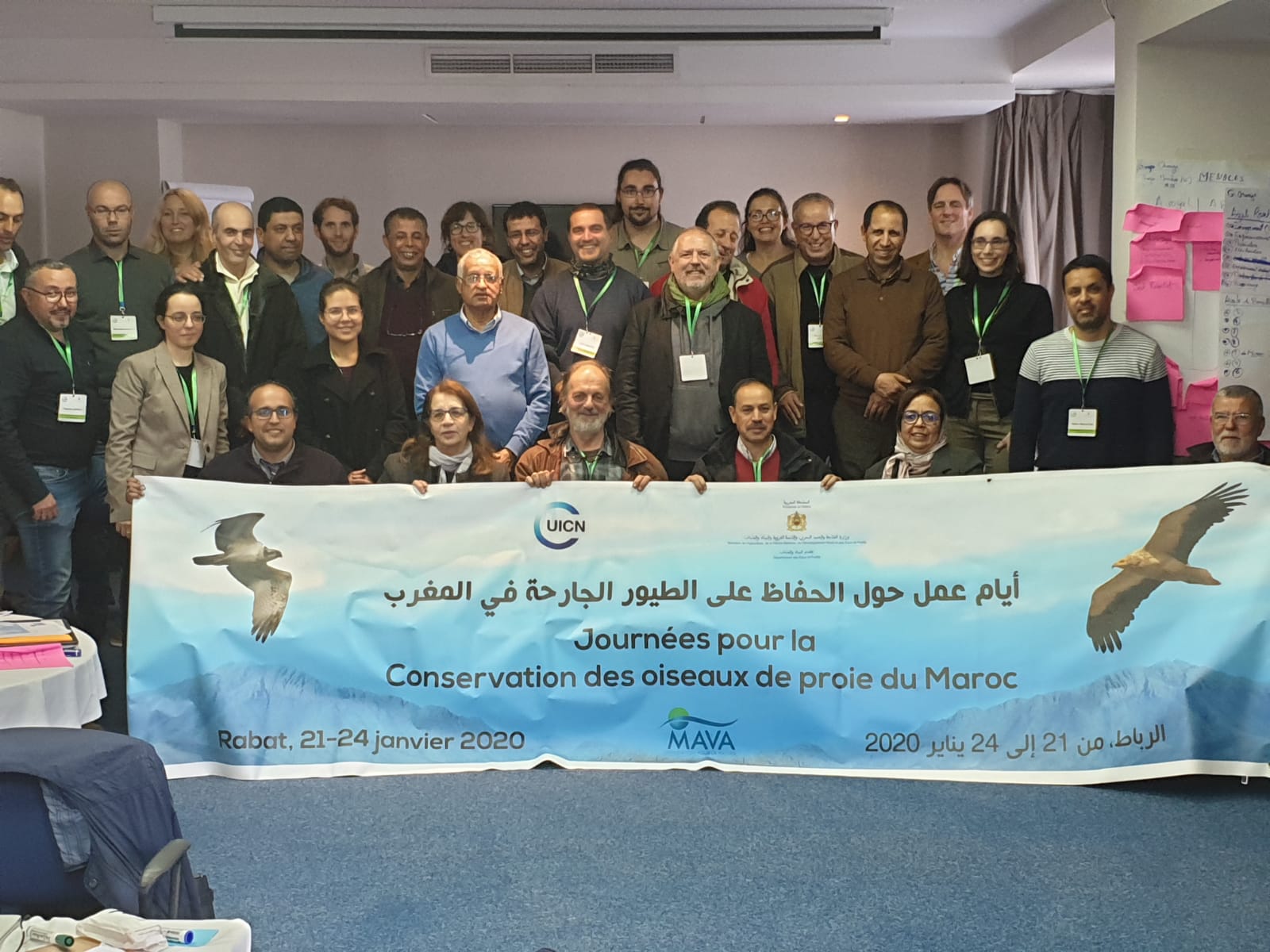Under the leadership of the Moroccan Ministry of Agriculture, Maritime Fisheries, Rural Development and Water and Forests, a workshop launched in Rabat last January assessed the conservation needs of Morocco's birds of prey with the aim of developing a national strategy for threatened diurnal raptors. The main species targeted by this strategy will be the Bearded Vulture (Gypaetus barbatus), Egyptian Vulture, (Neophron percnopterus), Golden Eagle (Aquila chrysaetos), Killer Eagle (Aquila rapax), Bonelli's Eagle (Aquila fasciata), Northern Goshawk (Accipiter gentilis), Osprey (Pandion haliaetus), Eleonora's Hawk (Falco eleanorae) and the Peregrine Falcon (Falco peregrinus).
The new strategy will be based on results obtained during field works carried out by various Moroccan and international experts during 2019.
The workshop, organized by the IUCN Centre for Mediterranean Cooperation, under the auspices of the Department of Water and Forest of Morocco, was supported by the Conservation Planning Specialist Group of the IUCN Species Survival Commission. The IUCN Moroccan Committee, GREPOM/BirdLife Maroc and the Association Marocaine pour la Fauconnerie et la Conservation des Rapaces (AMFCR), along with all the NGOs that previously participated in field missions also attended the workshop..
Over the course of the last century, Morocco has seen 5 species of diurnal cliff-nesting raptors disappear from its landscape. The activities initiated by IUCN-Med in 2015 have made it possible to identify the threats and main causes of mortality within these species, such as interaction with power lines. In Februrary 2019, the Atlas Programme, developed by the Department of Water and Forests of Morocco, IUCN-Med and the Regional Government of Andalusia (Junta de Andalucia), coordinated the launch of Morocco´s first census of diurnal rupicolous raptors. The results of which were also presented during the workshop in Rabat.
Cross-border cooperation between Spain and Morocco
Participants from the Ministry of Ecological Transition and Demographic Challenge of Spain and the Department of Water and Forests of Morocco also started to work towards stronger cooperation between Spain and Morocco in order to ensure the proper conservation of birds of prey.
"Migratory birds face more and more threats during their long journeys. Given the migratory behaviour of these raptors, it is essential to address common conservation issues through cooperation, taking advantage of the interaction of certain populations between Spain and Morocco. The exchange and transfer of knowledge between Moroccan and Spanish institutions is essential to conserve migratory birds and their habitats in North Africa," explains Antonio Troya, Director of IUCN's Centre for Mediterranean Cooperation.
This process will follow the international guidelines of the Convention on Migratory Species (CMS), the Memorandum of Understanding on the Conservation of African and Eurasian Migratory Birds of Prey (Raptors MOU) and will also contribute to Morocco's national Red List of birds, recently launched by national stakeholders.

These activities are developed in the framework of the project Safe Flyways - reducing infrastructure-related bird mortality in the Mediterranean , funded by the MAVA Foundation.
Photos: IUCN Red List https://www.iucnredlist.org/
| 


